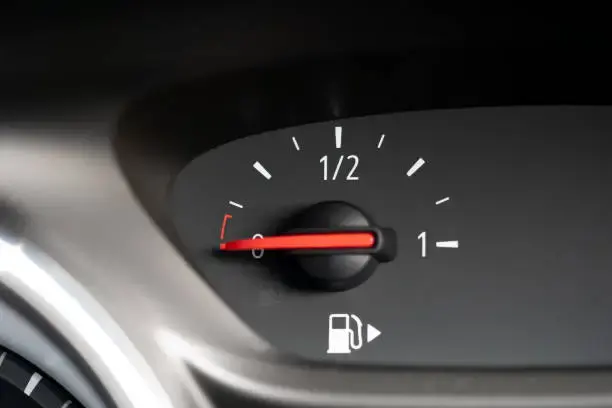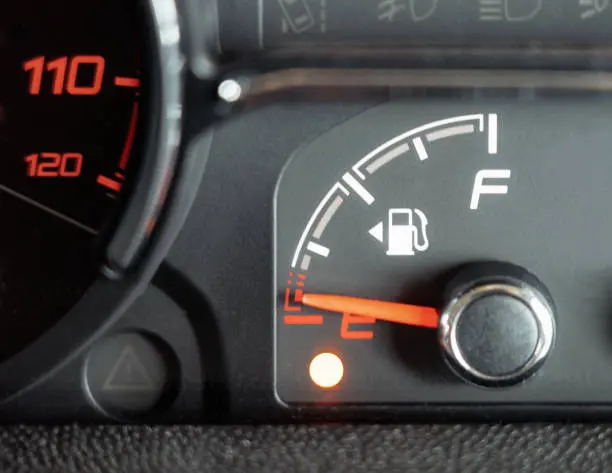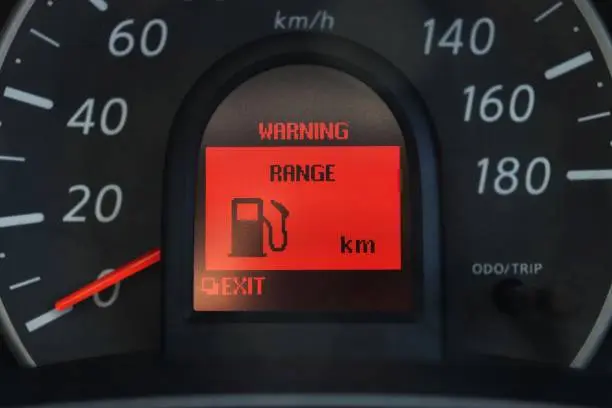You know that moment of panic? You’re driving along, you glance down, and your fuel gauge is sitting on “E” – but you just filled up the tank. Or worse, it’s stuck on “F” and hasn’t budged for a week. That little needle (or those digital bars) has one job: to keep you from an unexpected and very long walk. When it stops working, it feels like a betrayal.
That moment you realize your fuel gauge is not working can really throw you off. Maybe the needle’s stuck on empty, or it dances around unpredictably. Whatever the symptom, a faulty fuel gauge leaves you guessing about how much gas you actually have left—and that’s a stress you don’t need.
Let me break it down for you in plain English. Think of it like a team of runners in a relay race:

- The Battery is the energy drink – it provides the power for the whole thing.
- The Ignition Switch is the starting gun. Turn the key, and the race begins.
- The Fuse is the safety official. If there’s a problem, this little guy takes the hit to protect everything else. A blown fuse is often the simplest fix.
- The Gauge on your Dash is the finish line. It’s just waiting for the signal to show the result.
- The Real MVP, the Fuel Gauge Sender: This is the runner inside your gas tank. It’s a float on an arm (just like the one in your toilet tank) that slides up and down with the fuel level. As it moves, it changes an electrical signal.
When the tank is full, the float is up, and it sends a signal that says, “Hey dashboard, show a FULL reading!” When the tank is empty, the signal changes to “Show EMPTY!”
If that signal gets interrupted anywhere along the chain – by a blown fuse, a broken wire, or a tired old sender – the finish line (your gauge) gets confused. It might lie, dance around, or just give up completely.
Now that you know how the team should work, let’s figure out why yours is on the fritz.
Table of Contents
Is Your Fuel Gauge Really Broken? How to Tell
Before you start swapping parts, let’s be sure. Here are the classic signs:
- The Needle is Dead: You turn the key, all the other dashboard lights do their dance, but the fuel gauge needle doesn’t move at all. It might be stuck on Empty, stuck on Full, or just dead in the water.
- The Erratic Dancer: The needle jumps around wildly while you’re driving, from full to half to empty without any logic.
- The Constant Liar: The gauge reads “Full” all the time, even when you know you’ve driven 200 miles. Or, more dangerously, it reads “Empty” right after you’ve filled the tank.
My Pro Tip: The next time you fill up your tank completely, take a mental note of where the needle points. If it doesn’t go all the way to “F,” you’ve got a problem brewing.
What to Do When Your Fuel Gauge is Not Working: A Step-by-Step Fix

Always disconnect the negative battery cable before doing any electrical work.
- The Simplest Check First: The Fuse. This is the easiest and cheapest fix. Locate your car’s fuse box (check your owner’s manual for its location—it’s often under the dashboard or in the engine bay). Find the fuse for the instrument cluster or fuel gauge, pull it out, and check if the tiny metal strip inside is broken. If it is, replace it with a fuse of the exact same amperage. A 50-cent fuse can save you a $500 headache.
- The Ground Wire. A poor ground connection can wreak havoc on electrical systems. Trace the wiring from the fuel tank sending unit (you’ll often find the connector near the top of the tank) and make sure its ground point to the chassis is clean, tight, and free of rust. A quick scrub with a wire brush can work miracles.
- Testing the Fuel Gauge Itself. This is a bit more advanced. You can simulate the signal from the sending unit. With the wiring connector to the fuel tank unit disconnected, use a specific resistor (often a 10-ohm resistor to simulate “Full” or a 73-ohm resistor to simulate “Empty”—check a service manual for your car’s exact values) between the signal wire and the ground wire. Turn the ignition to “ON.” If the gauge moves to the expected position, the gauge itself is fine, and the problem is almost certainly the…
The Heart of the Matter: The Fuel Gauge Sensor
Nine times out of ten, if the fuses and wiring are good, the culprit is the fuel gauge sending unit inside the tank. The float can get a hole in it and sink, or the delicate wiper arm on the resistor can wear out from years of sliding back and forth. This is a common job after a fuel pump change, which leads us perfectly into our next point.
Changed Your Fuel Pump? Now Your Gauge is Broken. Here’s the Fix.
I’ve seen this countless times. On many modern cars, the fuel pump and the fuel gauge sending unit are one combined assembly. If a mechanic (or a DIYer) is rushed during a fuel pump replacement, they might:
- Forget to plug the electrical connector back in.
- Kink or damage the wiring.
- Or, if they used a cheap, aftermarket pump assembly, the new sending unit itself could be faulty right out of the box.
If your gauge stopped working right after a pump replacement, this is the very first place to look. Don’t be shy about taking it back to the shop and asking them to check their work.

Is Your Diesel or Digital Fuel Gauge Lying to You? Here’s What’s Really Going On.
- Diesel Engines: The principles are exactly the same. However, diesel fuel is an oil, not a solvent like gasoline. Over time, it can leave more varnish and deposits on the sending unit’s resistor strip, leading to inaccurate readings. The fix is still the same: inspect and likely replace the sending unit.
- Digital Fuel Gauge Not Reading Correctly: These systems are more sensitive. They rely on the same sending unit, but the signal is interpreted by a computer. This can mean a software glitch. Sometimes, a simple “reset” by disconnecting the car’s battery for 10-15 minutes can clear the error. If not, the diagnostic path is similar: check wiring, then the sensor.
How to Check How Much Gas You Have with a Broken Fuel Gauge
So, you need to drive the car before you can fix it? Here’s the old-school method I use:
- The Trip Odometer is Your New Best Friend. Fill your tank completely and reset your trip odometer to zero.
- Know Your Car’s Range. If your car normally gets 300 miles to a tank, play it safe. Refill after 250-275 miles.
- Keep a Jerry Can. Stash a one-gallon gas can in your trunk for absolute peace of mind. It’s a cheap insurance policy against running out.
How Much Does a Fuel Gauge Repair Really Cost?
- Fuel Gauge Not Working Cost: This varies wildly. If it’s just a fuse, it’s practically free. A new sending unit can cost anywhere from $50 to $400 for the part alone, depending on the car. Labor is the big variable. On some cars, it’s an easy job; on others, it requires dropping the entire fuel tank, which can mean 2-4 hours of labor ($200-$600). Always get a quote.
- Fuel Gauge Not Working on a Motorcycle: The diagnosis is identical! The system is just a smaller, simpler version of a car’s. The same steps apply: check the fuse, look for bad wiring/grounds, and then suspect the sending unit in the tank.
Fuel Gauge Problems? Let’s Get Straight to It.
How do I fix my fuel gauge not reading?
First, check the fuse. It’s the easiest fix. If that’s good, it’s probably the sending unit in the tank that’s given up. That’s the usual culprit in my experience.
Can I drive my car if the fuel gauge is broken?
You can, but you’ve got to be smart. Use your trip odometer like a hawk. Fill up the tank, reset the trip meter to zero, and don’t push your luck. I always tell folks to keep a gas can in the trunk, just in case. Better safe than walking.
Why is my fuel gauge on empty when I just filled up?
Ah, the classic sign of a broken circuit. No signal is getting to the gauge. Nine times out of ten, it’s a blown fuse, a broken wire, or the sensor in the tank has finally kicked the bucket.
How do I reset my fuel gauge?
For most old-school gauges, there’s no reset button. It’s not a computer. But for newer digital dashes, try disconnecting the battery for a few minutes. Sometimes that tricks the computer into recalibrating. After you put in a new sensor, just cycling the key on and off a few times can help it find its range.
Let’s Wrap This Up: You’ve Got This
Look, a wonky fuel gauge is frustrating, but it’s almost always a simple fix if you methodically check the basics first. I’ve seen too many folks replace a $200 part when a 50-cent fuse was the real problem all along.
I’ve poured all my years of experience into this guide to help you out. Now, I want to hear from you. What kind of car or motorcycle are you working on? What exactly is your fuel gauge doing? Tell me about your situation in the comments below—I read every one and I’ll do my best to give you my personal advice. Let’s get your gauge working again together.
And if you found this helpful, check out my other articles on What Causes Transmission Slipping? The Expert’s Definitive Answer
and Oil Change at Home: The Expert’s Guide to Doing It Right and Saving Money.
